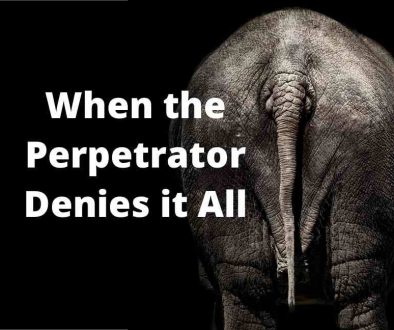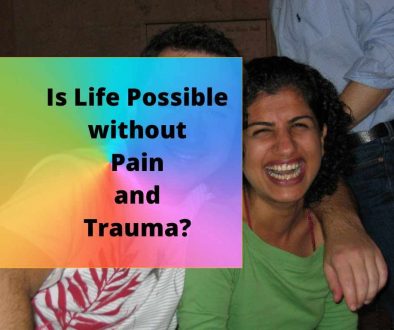“Stuck” Trauma into the Body
I have been writing about psychological and emotional impacts of trauma for a few months now. In this unpacking of the complexity of the impact of abuse, one of the other major elements has been the “Stuck” trauma into the body. It stems from the idea that we store trauma in our body and it shows up physically in all sorts of ways – tight and stiff shoulders; collapsed sternum and chest; chronic muscular pain; chronic fatigue; digestive issues and many more complex illnesses.
Have you heard about Dr. Babette Rothschild? She specialises in the somatic impacts of trauma and has written many books on the subject. My blog 8 Keys to Safe Trauma Recovery – Dr. Babette Rothschild talks about one of her books, but there are so many more.
So my next a few blogs will focus on the physical and energetic body and how healing can occur at these levels.
Since I can remember, I have always suffered from digestive issues and other illnesses that didn’t make any sense, so much so, that some of my family members used to make fun of me. I never linked them to my “trauma”. To me, I was just a weak person, whose body didn’t work.
A bit later in life, I started suffering from chronic back pain, so bad that I wasn’t even able to sit at my desk and work for a significant length of time. Each morning I would start work and within 45 minutes to an hour, my back would start to hurt, breathing became difficult and I would have to go to a meeting room to lie down and stretch for a few minutes before I was able to breathe again.
In my blog Anatomy of Childhood Sexual Abuse Trauma, I have talked about how trauma can sneak up on us in ways that we may not understand. The body works the same way. The symptoms can appear quite unrelated to trauma but these start to resolve themselves once the body releases the stuck-ness of the trauma from itself.
“Stuck Trauma” – Holding a Protection Posture
Do you collapse your chest and let your shoulders fall forward? I know I have done it for years and I still do it when I am feeling unsafe and when I want to protect myself from my environment. It’s a desire to curve myself into a ball; to contract myself; to diminish so that people don’t notice and maybe I can be safe again.
My back becomes more rounded and my chest collapses a little bit. I sit like this on my desk; I go to the gym like this and have injured myself countless times.
I can tell you though – the posture does nothing to protect. On the contrary, when I walked around wanting to diminish, people’s behaviour follows suit and they make me feel even more diminished. I am defending before I am even attacked and instinctively, I caused people to attack because I have already taken the defensive stance.
It’s a strange paradox – Stay open but be prepared to take a defensive stance if the situation arises but only if the situation arises and not before. I think it comes back to Find Your Sense of Safety without Control, which is such a crucial thing for survivors.
“Stuck” Trauma – Muscular Stiffness and Chronic Pain
In a normal scenario, when the mind (or rather our amygdala) encounters a threat, it prepares the body for a possible fight/flight mechanism. All muscles in the body tense up and the blood moves to the organs that are needed for fighting. Body functions that are considered unimportant for survival stall.
When the threat is over, the muscles come back to normal and everything is hunky dory again.
Unfortunately for survivors, the “normalising” of the muscles doesn’t occur as efficiently. For years, I have walked on the streets in the battle stance – to protect myself from the men on the streets. I was ready to fight if someone tried to hurt me. Years later, my body is still unlearning this stance.
For me, this has resulted in twisted spine & pelvic muscles and stiff back resulting in shoulder pain, right hip joint issues and severe chronic back and mild neck & shoulders pain.
“Stuck” Trauma – Organ Dysfunction
Trauma is an extreme form of stress on the body. Extreme situations require extreme measures, so the body produces copious amounts of cortisol to manage this stress. This process requires lots of energy and when the body is constantly producing cortisol, there is not much energy left for other body functions.
The adrenal gland gets tired causing fatigue; kidneys don’t work as efficiently. Digestion system is screwed up so the body is not able to get the nutrition that it needs and it further does deeper into the trauma state.
Anxiety creates further cardiovascular impacts and can also create long-term heart disease. Holding on to the grief can also cause lungs to behave erratically and may be a contributing factor in pneumonia and other lung based illnesses.
The neuropsychologist magazine has an article that explains all of this in detail. The National Child Traumatic Stress Network has also published overall impacts including the impact on the physical body.
In extreme cases, these physical and physiological symptoms can create many severe illnesses – all of this as a sign that the body is holding on to the trauma and it’s crying for help.
Healing from trauma then becomes a process where the body plays a major part in releasing the cellular memories and starts to relax so the energy is used in other places rather than in cortisol production.
In my next a few blogs, I will share my experiences of the ways I have used to heal my body. Some of them at a very physical level and others at a psychosomatic level.
Don’t worry, there is light at the end of the tunnel but it starts from acknowledging that there is a problem and I hope through this blog, you are able to recognise what specific physical and physiological impacts does your body exhibit…
Give your body permission to release this trauma to bring you back to a fully healed body.




October 14, 2017 @ 2:52 pm
I was interested but not surprised how language can change a sense of agency. Neuroscience has shown that trauma is held in the body by memory cells. This is a new concept of the body’s capabilities and the complexity of the neuro-biological relationship. The impact of trauma is probably easier to understand as hyper-response and hypo-response, (flight or flight response). Children exposed to early repeated trauma can adapt by being in both at once. This is crippling and the source of inner turmoil (mind) and outer (body as rigid or immobility) It is frightening and terrifying. The release of cortisol is part of the autonomic system which makes it beyond conscious control over years this becomes known as Allostatic Load in which the body is unable to return to homeostasis. The consequences are what used to be known as psychosomatic illness. it includes, rhuematoid arthritis, asthma, IBS, fibromyalgia, cardiovascular disease and sleep apnoea. this is a complex medical presentation and benefits from medication, C-Pap Sleep Therapy (this changed my life) and after ten years the Fibromyalgia has reduced its intensity. It also meant a commitment by myself and counsellor to long term management of the psychological development. This has made my life more bearable. I dont say ‘We store the pain” I say the pain is stored in the body, that is its role. However, neuro-science and psychological theory has certainly benefitted from understanding more fully the role of ‘practicing mindfulness ( I began meditating over 19 years ago now as spiritual practice and its benefits were immediate. However, I needed all this new data and research to fully benefit from it alone.
October 14, 2017 @ 3:14 pm
Thank you, Maggie for such a detailed comment on my blog. It affirms the idea that body does show signs of trauma and the trauma goes deep into the cells of the body. For me, it took meditation as well as various body therapies to release and the process continues. I also think that children often experience “freeze” rather than flight or fight response and that means that we are so used to numbing ou bodies and keeping the trauma within…